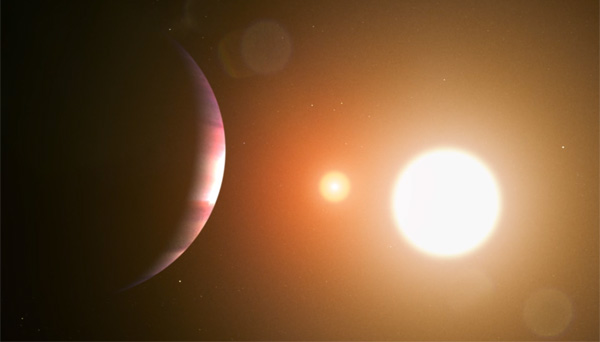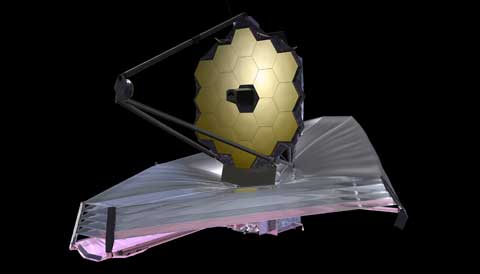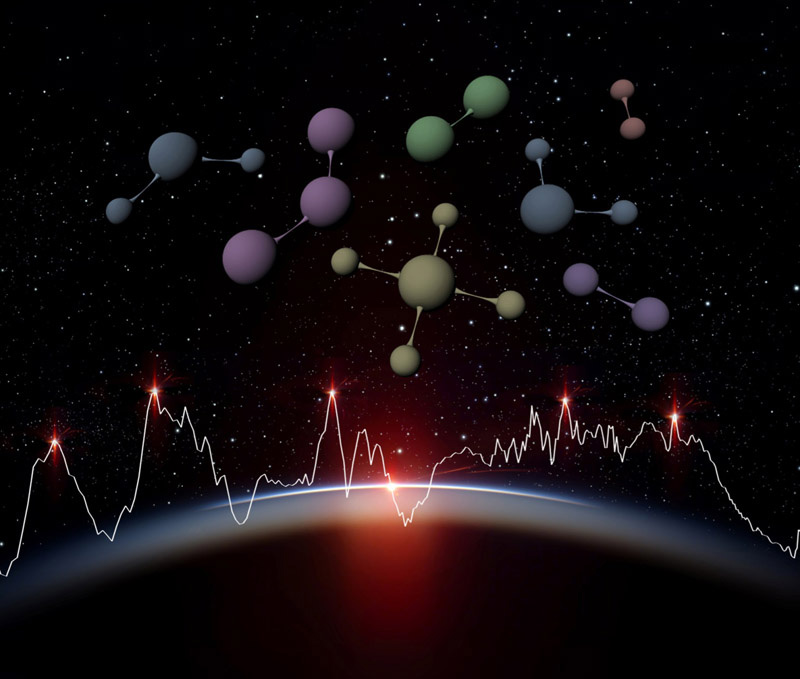Large observatories will require precise timing info to measure as many exoplanet atmospheres as possible. Backyard astronomers have the power to keep that intel fresh.

NASA Goddard
When it comes to peering into the atmospheres of planets outside our solar system, even a state-of-the-art observatory such as the James Webb Space Telescope could use some help from amateur astronomers.
After James Webb launches — hopefully in 2021 — it will be one of a few elite telescopes capable of measuring the compositions of exoplanet atmospheres. But doing so will require knowing precisely when to look. The observatory will need to catch planets just as they pass in front of — or transit — their stars. During the transit, starlight will filter through the planet’s atmosphere and imprint its chemical makeup on the star’s spectrum.
Getting that timing right for any given planet will depend on accurate predictions of future transits. But those predictions are only as good as the uncertainties inherent in existing observations. And that’s where amateur astronomers can help, says Robert Zellem (JPL). In a paper posted March 23rd to arXiv.org, he and colleagues propose that citizen scientists with small telescopes can keep transit observations “fresh,” thus reducing wasted time on James Webb and similar missions.
“I know there’s a ton of amateur astronomers out there that have really nice telescopes and that are capable of doing really high-precision observations,” says Zellem. “Even with a small 6-inch telescope, you can get really nice light curves.”
How Backyard Observing Could Help Space-based Observatories

NASA
The trouble for future missions is that any wiggle room in the timing of an exoplanet transit will have to be added to the observing time. “If there’s a 10-minute uncertainty, then you need an extra 10 minutes built into the observing schedule,” explains Zellem. What’s more, that uncertainty grows over time. An uncertainty of just one minute now will grow to about 15 hours in ten years, the team calculates.
“We have only so much time to observe,” says Knicole Colon (NASA Goddard Space Flight Center), the lead for JWST exoplanet science. To keep those uncertainties — and the corresponding observing overhead — down, astronomers need to periodically revisit known transiting planets and keep the timing information fresh. “That’s why this work comes into play,” she says. “It’s really about improving the efficiency of future observations.”
To see how amateur astronomers might help out, Zellem and colleagues observed 14 transits with one of NASA’s MicroObservatory telescopes, a network of robotic 6-inch scopes available to anyone online. From those observations, they calculate that even a single 6-inch telescope can offer enough precision to keep the timing info fresh for nearly 200 exoplanets (a subset of all known transiting planets plus those expected to be found by NASA’s TESS mission).
A band of 16 observers with small scopes could do even more, using their combined light-gathering ability to see fainter targets and subtler transits. The team estimates that amateurs could shave up to 5,000 days of observing time off a 200-planet survey on JWST and up to 10,000 days for a 1,000-planet survey on ARIEL, a European observatory scheduled to launch in 2028.
Exoplanet Watch

ESA / C.Carreau and ATG Medialab
An amateur-led effort could come in very handy as the TESS mission racks up more potential targets for these observatories. While JWST already has about 30 well-studied exoplanets picked out for its first year or two, says Colon, the newly discovered planets from TESS have not been observed nearly as much. Between amateurs and professionals, “we’re able to really get now the needed follow-up for TESS, some of which will be ideal targets for James Webb,” she says.
Amateur support for professional missions is not new, not even for the TESS mission. For example, the American Association of Variable Star Observers (AAVSO) has created an online database where members can upload observations of planet-hosting stars. Members of AAVSO have also supported a Hubble-led effort to probe the atmospheres of 15 exoplanets and have also observed some TESS targets to help sift out false positives from true exoplanets.
To expand on those efforts, Zellem and colleagues are launching Exoplanet Watch, a project to help amateurs refine the timing of exoplanet transits from TESS and other planet-hunting efforts. No particular expertise is needed — just the right equipment and a willingness to help. The team even provides open source software to automate all image analysis, taking in raw images and spitting out a light curve plus a model of the transit.
Scheduled to officially kick off by the end of this summer, Exoplanet Watch currently has about 70 beta testers, says Zellem, and the team is looking for more. They also have a collaboration with AAVSO in which anyone can upload their observations of transiting exoplanets. He notes that any peer-reviewed papers that use data from Exoplanet Watch will include the amateur astronomers as co-authors.
“I’ve always been really passionate about doing citizen science and also education and public outreach,” says Zellem. This effort unites his passions, and in the coming years astronomers will be able to explore as many remote worlds as possible.
Reference:
R.T. Zellem et al. Utilizing small telescopes operated by citizen scientists for transiting exoplanet follow-up. arXiv.org. Posted March 23, 2020.
 2
2









Comments
Eric-David
March 30, 2020 at 4:53 pm
Mark Slade Remote Observatory in central Virginia, run by Dr. Myron Wasiuta, has collaborated with NASA and the TESS mission in the manner described in the article.
You must be logged in to post a comment.
John-Murrell
July 6, 2020 at 6:43 am
There is also a European project called Exoclock see https://www.europlanet-society.org/ariel-exoplanet-mission-celebrates-machine-learning-challenge-and-citizen-science-launch/
This is aimed at refreshing transit time data for the ARIEL mission.
There is also Exoworld spies https://www.exoworldsspies.com/en/
Another repository is the Exoplanet database at http://var2.astro.cz/ETD/contribution.php
Another source that I presume is being used by those involved in the exoplanet spectroscopy missions it to mine the Gaia & ZTF photometry data bases for historic transit detections. The longer ago they are the better it ties the actual transit time down though one has to be careful with time scale & flavour conversions.
Gaia provides the information in TCB and ZTF in HJD though is is not clear what the other part of the time scale information is though it should be documented on the appropriate websites or papers.
You must be logged in to post a comment.
You must be logged in to post a comment.